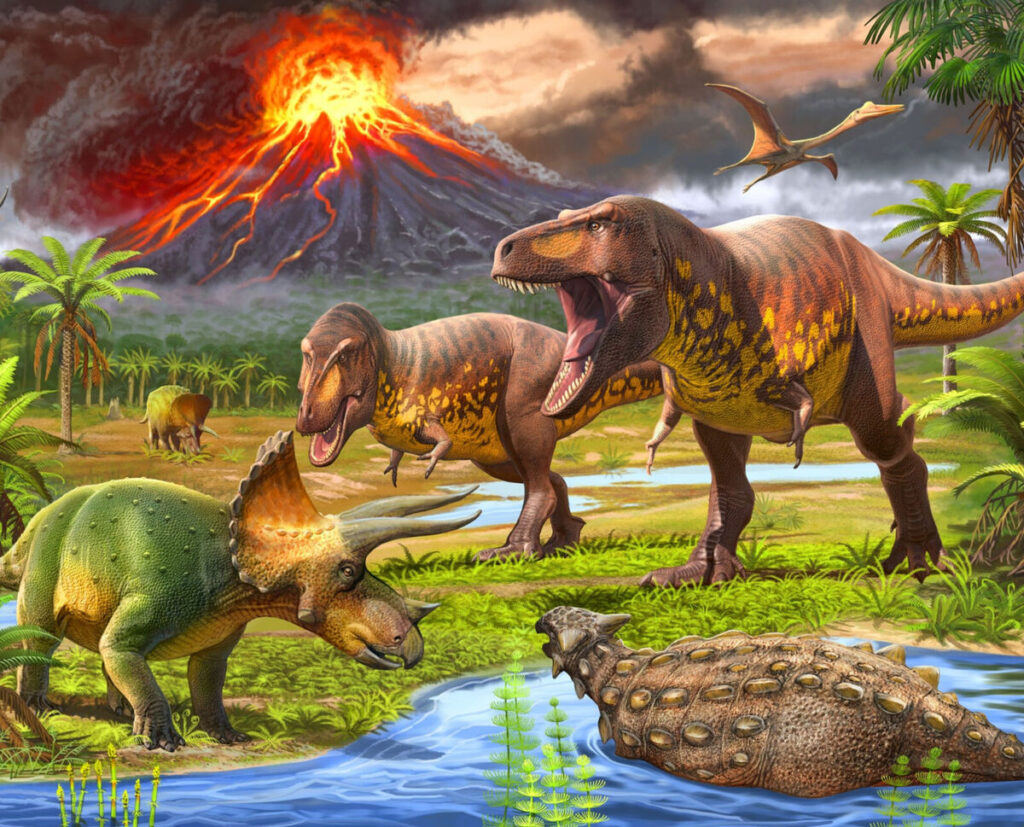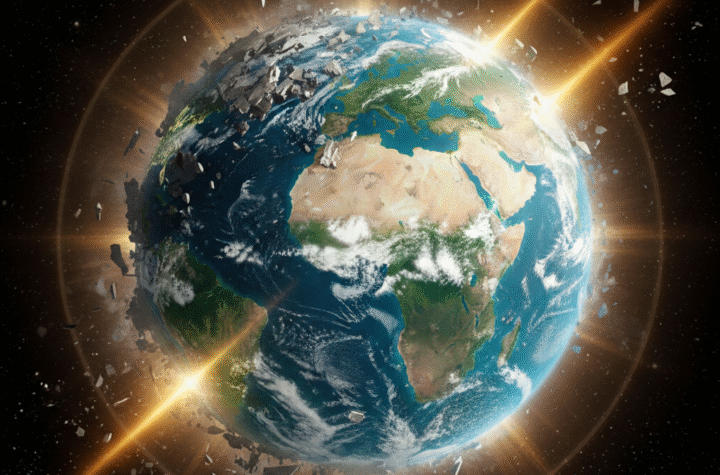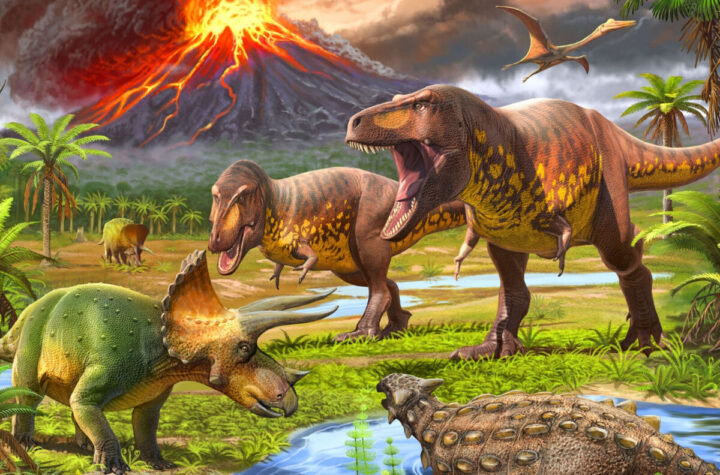
In the history of Earth, there is what we call “The Prehistoric Era.” No one can deny this because of the overwhelming evidence of fossils from prehistoric plants and animals. According to radiometric dating, which is the process of determining the age of the Earth, our planet is now about 4.543 billion years old. And if we will determine the age of humanity from our generation up to the creation of Adam, it would be more or less 6000 years old. The question is, where will we put the dinosaurs, preshistoric plants, animals and prehistoric men in the Bible timeline? If Adam was only created about 6000 years ago, so what about the millions of years before that? What about the prehistoric men and ancient civilizations?
We will now delve deeper into this narrative that intertwines scientific understanding with spiritual insights, revealing a cosmic battle, divine purpose, and our personal connection to this prehistoric era. The prehistoric Earth, isn’t just a distant past; it’s a foundational chapter on the going story of man. Let’s explore therefore, this prehistoric Earth, and Satan’s intervention in the plan of God for His people.
The Earth Became “Without Form and Void“
Genesis 1:1 “In the beginning God created the heaven and the earth.
2 And the earth was without form, and void; and darkness was upon the face of the deep. And the Spirit of God moved upon the face of the waters.”
When we turn to the creation account in Genesis 1, verse 1 says that “God created the heaven and the earth.” And in Isaiah 45:18 it says:
“For thus saith the LORD that created the heavens; God himself that formed the earth and made it; he hath established it, he created it not in vain, he formed it to be inhabited: I am the LORD; and there is none else.“
It is clear in this verse that when God created the Heaven and the Earth, they were created not in vain, but to be inhabited. Both the Heaven and Earth in Gen. 1:1 were in good condition and were already inhabited. They were already creations inhabiting these two worlds in verse one. The angelic host inhabiting heaven and the prehistoric creatures inhabiting Earth.
But then something happened to Earth in verse 2. Take note that this only happened to Earth, nothing happened in Heaven. The Earth in verse 2 became “without form and void” and “and darkness was upon the face of the deep.” The Earth, which is in good condition in verse 1, became in chaos and in darkness in verse 2. Again, this phenomenon has only occurred to Earth. Heaven was not affected.
The original Hebrew words here for “without form and void” are “tohu va bohu,” which carry a much richer meaning than a mere absence of shape and inhabitants. Tohu signifies “waste” or “a desolation.” It speaks of something ruined, devastated, or chaotic. Bohu means “emptiness” or “empty.” It implies a void, a vacant space. Combined, “tohu va bohu” paints a picture of an Earth that “had become waste and empty.” Something happened to Earth between Genesis 1:1 and Genesis 1:2 resulting in this devastated and disolate condition. And we know what caused it. It’s the rebellion of Lucifer and his angels (Rev. 12:7-8). Their fall got them to be banished to Earth and never to access heaven again (Rev. 12:9-12). It is them that made Earth to be “without form, and void; and darkness was upon the face of the deep.”
“Replenish” the Earth: A Clue to the Prehistoric Era
Genesis 1:8 “And God blessed them, and God said unto them, Be fruitful, and multiply, and replenish the earth, and subdue it: and have dominion over the fish of the sea, and over the fowl of the air, and over every living thing that moveth upon the earth.”
Another key word that leads to this interpretation is the word “replenish” in Genesis 1:28.The word “replenish” here means “to fill again.” If the Earth was to be “filled again,” it strongly implies it had been filled before. This linguistic detail opens the door to the concept that there is a prehistoric era that spans millions of years, were prehistoric creatures lived, before Adam was created and commanded to replenish the Earth.
It was Satan who is a destroyer (John 10:10) and his fallen angels, that made Earth to be in “waste and empty” state.
The Earth of Old and the Mystery of the Ice Ages
2 Peter 3:5 “For this they willingly are ignorant of, that by the word of God the heavens were of old, and the earth standing out of the water and in the water:
6 Whereby the world that then was, being overflowed with water, perished:
7 But the heavens and the earth, which are now, by the same word are kept in store, reserved unto fire against the day of judgment and perdition of ungodly men.”
The concept of a Prehistoric Earth is further supported by scripture 2 Peter 3:5 – 8 – The Earth of Old.” Peter speaks of an earlier Earth, destroyed by water, distinguishing it from the heavens and Earth that now exist. This suggests a history to our planet that extends beyond what many conventionally consider the beginning.
This “Earth of Old” could offer insights into mysteries like the Ice Ages, when Earth is surrounded by water. This intriguing idea connects with scriptural descriptions such as “Psalm 24:6 – Earth surrounded by water,” which speaks of God founding the Earth upon the seas and establishing it upon the waters. A canopy of water, perhaps, or a different configuration of Earth’s waters in its ancient past, could have significantly influenced its climate and led to multiple glacial periods.
The existence of Dinosaurs and Prehistoric Men during the prehistoric era makes profound sense. These are integral parts of the “Prehistoric world” that existed before the “tohu va bohu” state and the subsequent re-creation. The fossil record clearly attests to these ancient inhabitants, and integrating them into a comprehensive, biblically informed understanding of Earth’s history enriches our perspective. It allows us to appreciate the vastness of God’s creative work across different dispensations and to see the evidence in the ground not as contradictions, but as confirmations of an ancient history.
The Story of Earth is our Story
2 Corinthians 4:6 “For God, who commanded the light to shine out of darkness, hath shined in our hearts, to give the light of the knowledge of the glory of God in the face of Jesus Christ.”
Earth represents man. What happened to Earth also happened to Man. And what will going to happen to it will also going to happen to Man. Remember that you have two components in you – the heaven and the earth.” We are microcosms of the universe, possessing both a spiritual (heaven) and a physical (earth) nature.
Just as God divided darkness from light on the first day, so too does He work within us: God divides the Darkness from light when we were born-again. This isn’t merely about the sun appearing; it’s about a spiritual illumination. This divine light which is the Spirit of God welling in us is meant to shine within us: “until the day shine in your heart (2 Pet. 1:19).“ The story of the Earth’s creation and re-creation becomes a template for our spiritual journey – moving from a state of “tohu va bohu” (spiritual waste and emptiness) to being filled with divine light and purpose.
The Gathering Waters: From Chaos to Order
Genesis 1:6 “And God said, Let there be a firmament in the midst of the waters, and let it divide the waters from the waters.”
The creation account also speaks of order emerging from chaos. The Firmament that divides the water and the three heavens (2Cor.12:1-4).” The firmament creates distinct realms, separating the waters above from the waters below. This act of divine organization mirrors the structuring of spiritual realities, creating boundaries and order. The reference to “three heavens” from 2 Corinthians 12:1-4 adds another layer of spiritual depth, hinting at different spiritual dimensions or realms.
Finally, the gathering of the waters in Gen. 1:9 – “let the waters under the firmament gather together.” This act reveals dry land, making the Earth habitable and ready for life. It symbolizes God’s ongoing work of bringing order, purpose, and life out of any form of chaos or desolation, both on a global scale and within our individual lives.
Conclusion
The prehistoric Earth, far from being a dry historical record, is a living testament to a cosmic battle, divine power, and enduring purpose. By understanding “tohu va bohu” as a state of devastation, “replenish” as an act of refilling, and acknowledging the “Earth of Old,” we can integrate the existence of dinosaurs and prehistoric men into a richer, more comprehensive narrative. More importantly, this ancient story becomes intensely personal, mirroring our own journey from spiritual emptiness to illumination, guided by the divine light that shines in our hearts. The cosmic battle continues, but the promise of replenishment and new creation remains, for the Earth’s story is, ultimately, our story too.
![]()




More Stories
HE SAT WITH ME WHILE I WAS BROKEN
YOU WERE CHOSEN IN THE DARK
WHEN GOD SAYS “YOU ARE STILL MINE”